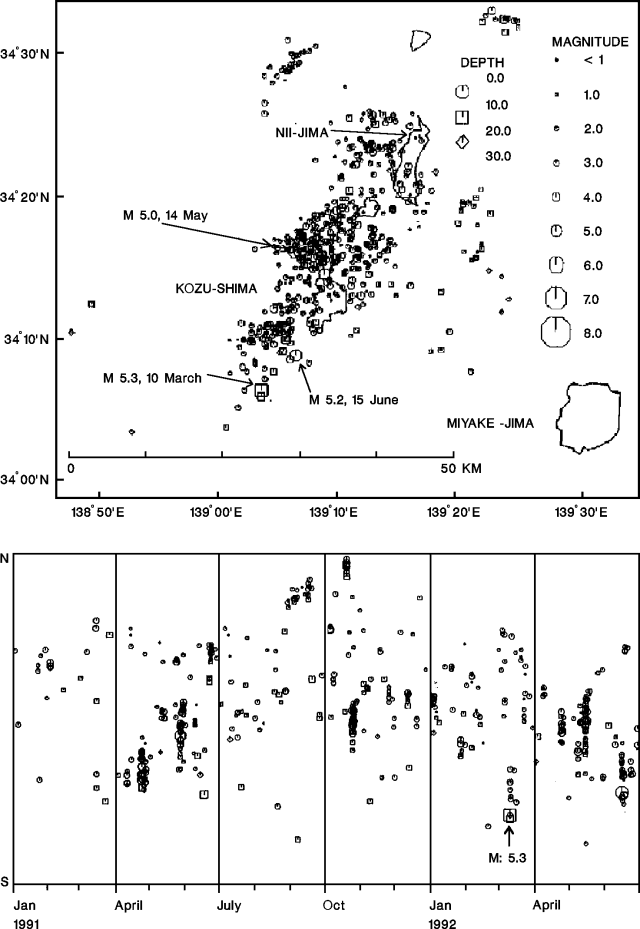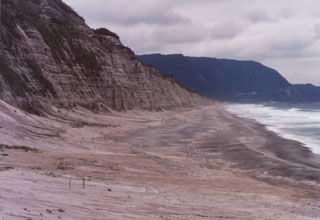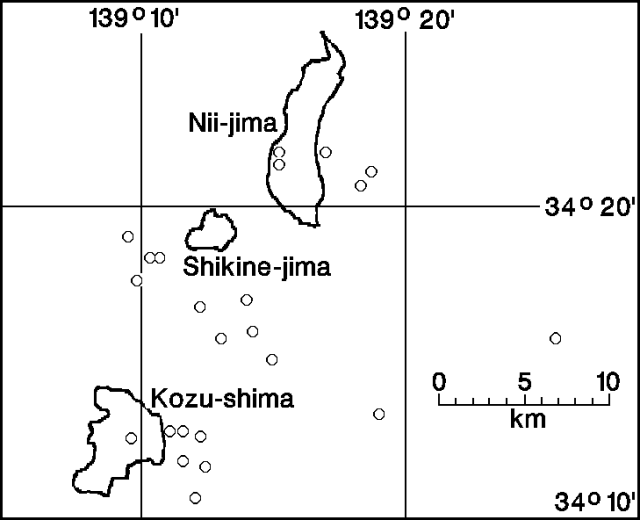Report on Niijima (Japan) — January 1992
Bulletin of the Global Volcanism Network, vol. 17, no. 1 (January 1992)
Managing Editor: Lindsay McClelland.
Niijima (Japan) Earthquake swarm but no surface changes
Please cite this report as:
Global Volcanism Program, 1992. Report on Niijima (Japan) (McClelland, L., ed.). Bulletin of the Global Volcanism Network, 17:1. Smithsonian Institution. https://doi.org/10.5479/si.GVP.BGVN199201-284020
Niijima
Japan
34.397°N, 139.27°E; summit elev. 432 m
All times are local (unless otherwise noted)
An earthquake swarm was recorded on 3-4 January, centered 10 km SW of Nii-jima near Shikine-jima, a dome of the Nii-jima complex (figure 1). The largest shock, M 3.1, occurred at 0657 on 3 January. No surface anomalies were observed at the volcano or on the surrounding sea. Three weeks later, a swarm was recorded near Kozu-shima, 20 km SSW (figure 2).
 |
Figure 2. Epicenter map (top) and space/time diagram (bottom) showing seismicity around Kozu-shima and Nii-jima volcanoes, January 1991-June 1992. Courtesy of JMA. |
Geological Summary. The elongated island of Niijima, SSW of Oshima, is 11 km long and only 2.5 km wide. Eight low rhyolitic lava domes are clustered in two groups at the northern and southern ends of the island, separated by an area of flat-topped domes and a low isthmus of pyroclastic deposits. The Mukaiyama complex on the south and the Atchiyama lava dome on the north were formed during eruptions in the 9th century CE, the last known activity. Shikineyama and Zinaito domes form small islands immediately to the SW and W, respectively, during earlier stages of volcanism. Earthquake swarms occurred during the 20th century.
Information Contacts: JMA.


